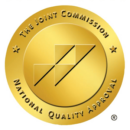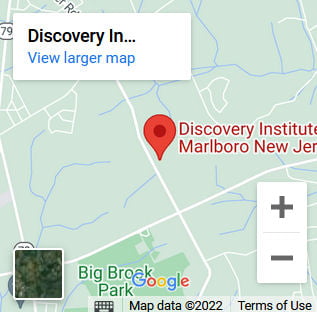Thinking Disorders: The Schizophrenia Spectrum and Other Psychotic Disorders
Thinking Disorders: The Schizophrenia Spectrum and Other Psychotic Disorders
Psychotic disorders are chronic mental disorders. These disorders affect the mind making it hard to think clearly, communicate effectively, behave correctly, and stay connected to reality. Many people look at psychotic disorders as weird mental disorders. So let’s look at schizophrenia vs. psychosis as well as schizoaffective disorder vs. schizophrenia.
Severe symptoms of psychotic disorders cause people to lose touch with reality. This interference in daily life leads some to use drugs and alcohol. But, how common is schizophrenia and alcohol use?
Psychotic disorders are mental health disorders that are chronic and severe. These disorders cause abnormal thoughts. For this reason, psychotic disorders are also known as thinking disorders. Above all, psychotic disorders make it hard to tell reality from psychosis.
Affecting only 1 percent of the population, psychotic disorders typically occur in the late teens to early 30s. Psychotic disorders also affect women and men equally. But, the various treatments and therapies are effective in controlling symptoms of psychotic disorders.
What is Psychosis?
Psychosis is a term that describes the set of symptoms resulting in strange thinking, perceptions, behaviors, and emotions. Furthermore, psychosis is a chronic brain condition affected by environmental factors such as stress and drug use.
Although 1 percent of people struggle with a psychotic disorder, 3.5 percent experience psychosis. This rate shows psychosis is more common than people think. Seeing and hearing things that aren’t, there can be confusing and scary. However, the treatment of weird mental orders can improve daily life.
Symptoms of psychosis include:
- Difficulty concentrating
- Feeling down or depressed
- Sleeping too much or not enough
- Anxiety
- Constant suspicion
- Withdrawal and isolation
- Delusions
- Hallucinations
- Speech disorganization
- Suicidal thoughts and actions
CONTACT US
Find out how we can help
Our compassionate counselors are standing by to answer any questions you may have. After helping thousands of people over the last 50 years, we have the resources to help you and your family and all your individual needs.
What are the Types of Psychotic Thinking Disorders?
Schizophrenia is the most common psychotic disorder. This disorder causes changes in behavior, delusions, and hallucinations. These symptoms last longer than six months and affect school, work, and social interactions. Although many psychotic disorders have overlapping symptoms, they all have distinct characteristics.
Schizophrenia: Psychotic Thinking Disorders
A severe mental health disorder, schizophrenia affects a person’s thoughts, actions, and feelings. But, the most severe symptoms are delusions and hallucinations. Furthermore, seeing and hearing things that aren’t there must last more than 6 months.
Almost 3.5 million Americans struggle with schizophrenia. This is about 1 percent of the population. Unfortunately, schizophrenia and alcohol use disorder commonly co-occur in schizophrenia. People with schizophrenia suffer the following symptoms:
- Hallucinations are hearing and seeing things that are not there.
- Auditory (hearing)
- Visual (sight)
- Olfactory (smells) and gustatory (tastes)
- Tactile – feeling like things are moving on your body
- Delusions are strange beliefs easy to prove wrong. These beliefs include someone is trying to control their brain or the FBI is out for them. People may also think they have superpowers, believe they are famous. Types of delusions include the following.
- Persecutory delusions feel like someone is out to get you or believe someone is stalking, hunting, or framing you.
- Referential delusions cause people to believe forms of communication such as tv and radio, give them special messages.
- Somatic delusions center on the body. People believe they have a weird health problem like worms under the skin.
- Erotomanic delusions revolve around love. People may believe a celebrity loves them. Also, they may think people aren’t attracted to them, or their partner is cheating.
- Religious delusions make people believe they have a special relationship with higher powers. They may also think a demon possesses them.
- Grandiose delusions cause people to think they are rock stars or politicians.
- Disorganized speech and confused thoughts are common in schizophrenia. It’s hard for people with schizophrenia to stay focused on conversations and may seem to zone out. Furthermore, they often don’t make sense when they talk.
- Concentration problems include losing track of a tv show or a book.
- Movement disorders appear in people with schizophrenia. They can seem jumpy or make the same movements over and over. However, they can be catatonic or entirely still for hours. However, if symptoms last longer than 6 months, then it’s given a diagnosis of schizophrenia.
Schizoaffective Disorder: Psychotic Thinking Disorders
Resembling schizophrenia, the schizoaffective disorder has persistent symptoms of psychosis. This disorder also has occasional symptoms of affective or mood disorder. Schizoaffective disorder is rare, with only 0.3 percent of Americans affected. Two types of schizoaffective disorder are:
- Bipolar type – episodes of mania and occasional major depression
- Depressive type – only episodes of major depressive episodes
Signs and symptoms of this disorder depend on the type, but they may include:
- Delusions
- Hallucinations
- Incoherent speech
- Bizarre behaviors
- Depression symptoms
- Manic episodes including an increase in energy and odd behaviors
- Impairment of daily functions
- Lack of personal care
Delusional Disorder: Wierd Mental Disorders
Intense and irrational beliefs and suspicions characterize the delusional disorder. Although these beliefs and suspicions are outlandish and bizarre, people with this disorder believe them to be true. Furthermore, symptoms must last at least a month for a diagnosis.
Types of delusional disorder include:
- Erotomanic
- Grandiose
- Jealous
- Persecutory
- Somatic
Brief Psychotic Disorder: Thinking Disorders
Brief psychotic disorder has symptoms of psychosis. However, these symptoms last at least 1 day but no more than a month. Typically, symptoms are sudden. They also are triggered by stressful situations. Generally, symptoms end quickly, and everyday life resumes.
Schizotypal Disorder: Weird Mental Disorders
Schizotypal disorder is often confused for schizophrenia. In particular, people have paranoia, unusual thoughts, and unrealistic beliefs. Although people experience brief psychotic episodes, the hallucinations and delusions are less frequent and intense. Furthermore, almost 4 percent of Americans struggle with schizotypal disorder.
Symptoms include:
- Withdrawal and isolation
- Lack of emotions and inappropriate emotions
- Excessive social anxiety
- Incorrect views of situations and interactions
- Unusual thoughts and beliefs
- Paranoid and suspicious thoughts of others
- Believing they have superpowers
- Unusual perceptions
- Lack of self-care
- Incoherent speech
What is the Difference: Schizophrenia vs. Psychosis
In short, schizophrenia is a mental health disorder, while psychosis is a symptom. Furthermore, a person with psychosis may not have schizophrenia, but a person with schizophrenia may have psychosis symptoms.
The National Institute of Mental Health states that 3 out of 100 Americans experience psychosis. In addition, almost 100,000 teens and young adults will experience their first episode every year. However, schizophrenia affects about 1 percent of Americans.
What is the Difference: Schizoaffective Disorder vs. Schizophrenia
Besides being 2 different disorders, schizoaffective disorder and schizophrenia have distinct criteria for diagnosis. For instance, schizoaffective disorder may require mood disorder treatment, but schizophrenia may not. The DSM-5 also lists both disorders as psychotic disorders.
Subtle differences in symptoms help in achieving a correct diagnosis. For example, people with schizophrenia may become manic or depressed, but mood disorders are typically not prominent in their disorder.
Symptom Difference: Schizoaffective disorder vs. Schizophrenia
Schizoaffective disorder vs. schizophrenia has subtle differences, including:
Schizoaffective Disorder
- Symptoms begin in the early 20s
- Hallucinations, delusions, disorganized thinking, and flat affect
- Chronic and persistent psychotic symptoms
Schizophrenia
- Symptoms begin in the early 20s
- Hallucinations, delusions, unorganized thinking, flat affect along with mania and depression
- Episodes of psychotic symptoms
So, the differences in schizoaffective disorder vs. schizophrenia are mainly mood disorder symptoms and the appearance of psychotic symptoms. However, treatment of these weird mental disorders can help control these symptoms.
Schizophrenia vs. Psychosis
Schizophrenia is a chronic thinking disorder. However, psychosis is a group of symptoms. While schizophrenia causes psychosis, it also has other symptoms.
Besides, schizophrenia isn’t the only mental illness to cause psychosis. Such illnesses include bipolar disorder, depression, dementia, and borderline personality disorder. Furthermore, certain substance misuse and withdrawal can cause psychosis. For this reason, seeking treatment for weird mental disorders is extremely important.
Common Signs and Symptoms of Psychotic Thinking Disorders
Although hallucinations, delusions, and altered thinking are the main symptoms of psychotic disorders, there are other symptoms. The symptoms of thinking disorders include:
- Hallucinations
- Delusions
- Disorganized and confused thinking
- Incoherent speech
- Odd and dangerous behaviors
- Unusual or slowed movements
- Lack of hygiene and self-care
- Loss of interest in hobbies and activities
- Issues with relationships, at work or school
- Lack of emotions, detached, cold
- Mood swings such as depression and mania
- Misuse of substances or substance use disorder
How Common is Schizophrenia and Alcohol Use?
Living with schizophrenia means a person’s brain is always on edge. People with schizophrenia are tense and always wonder if things are real or imaginary. For this reason, many people turn to substances to cope and relax. In fact, the journal Alcohol Research and Health says alcohol use disorder is the most common co-occurring condition with schizophrenia.
However, schizophrenia and alcohol are dangerous combinations. People who have psychotic episodes are more sensitive to the effects of alcohol. As a result, people with schizophrenia tend to misuse alcohol and struggle with alcohol use disorder (AUD).
Substance-Induced Psychotic Disorder
Triggered by substance misuse, substance-induced psychotic disorder also causes hallucinations and delusions. Typically, this psychotic disorder is short-term. However, in rare cases such as severe long-term substance misuse, it can last for years. Long-term care in a residential treatment program is vital for treating substance-induced psychotic disorder.
Treatment of Psychotic Thinking Disorders
Treatment for weird mental disorders such as schizophrenia is available in inpatient and outpatient treatment. Although both treatment settings offer chronic long-term care, residential treatment provides an intense treatment program.
Inpatient or residential treatment offers around-the-clock care and supervision. This treatment setting is most effective in treating thinking disorders. For members with severe psychotic episodes, medical care in inpatient treatment helps minimize these episodes.
Treatment for schizophrenia and alcohol use, whether inpatient or outpatient, is tailored to the member’s needs. Our team of doctors and therapists leads treatment for thinking disorders at Discovery Institute. Along with various therapies, including pharmacotherapy, members can effectively manage co-occurring schizophrenia and alcohol use.
Therapies for Schizophrenia and Alcohol Use Disorder
Whether it’s schizoaffective disorder vs. schizophrenia or schizophrenia vs. psychosis, there are various effective therapies. For some members, a combination of individual psychotherapy and pharmacotherapy is needed to regain control of their life.
Individual Psychotherapy for Weird Mental Disorders
Because psychotic disorders cause various mental issues, individual therapy gives members a place to explore these feelings and thoughts. With the help of a therapist, members learn coping skills and thought-changing exercises.
Types of individual psychotherapy include:
- Cognitive-behavioral Therapy (CBT)
- Dialectical Behavior Therapy (DBT)
- Trauma Processing
Group Therapy for Psychotic Thinking Disorders
Group therapy is crucial in treating psychotic disorders and SUD. Members receive and give support to others with the same struggles. Because psychotic disorders and SUD lead to social and emotional isolation, group therapy helps build trust and respect.
Types of group therapy methods include:
- Focus groups
- Creative groups
- Writing therapy
- Art therapy
- Processing groups
Family Therapy for Psychotic Thinking Disorders
Schizophrenia and alcohol use affects the whole family. Souses may have to take on more responsibilities. At the same time, children may get scared during psychotic episodes. Above all, schizophrenia and alcohol use can lead to emotional and physical abuse.
Family therapy involves a therapist, the member, and their loved ones. Each person in the family can express their feelings without fear. As a result, family therapy helps families rebuild a loving and well-rounded family unit.
Holistic Therapy
Holistic therapy refers to treating the mind, body, and soul. It is also becoming more popular as people seek natural treatments. Holistic therapies help members stay in the moment and be mindful of the now.
Types of holistic therapies include:
- Yoga
- Meditation
- Reiki
- Mindfulness
- Art therapy
- Excercise
- Acupuncture
- Nutritional therapy
Pharmacotherapy for Psychotic Thinking Disorders
Some members will need medications to treat psychotic thinking disorders. The most common type of medication used in treating thinking disorders is antipsychotics. Although there isn’t a cure for thinking disorders, pharmacotherapy can effectively manage the symptoms.
Older antipsychotics include:
- Chlorpromazine (Thorazine)
- Fluphenazine (Prolixin)
- Haloperidol (Haldol)
- Loxapine (Loxitane)
- Perphenazine (Trilafon)
- Thioridazine (Mellaril)
Newer “atypical antipsychotics” include:
- Aripiprazole (Abilify)
- Asenapine (Saphris)
- Brexpiprazole (Rexulti)
- Cariprazine (Vraylar)
- Clozapine (Clozaril)
- Iloperidone (Fanapt)
- Lurasidone (Latuda)
- Olanzapine (Zyprexa)
- Paliperidone (Invega)
- Paliperidone palmitate (Invega Sustenna, Invega Trinza)
- Quetiapine (Seroquel)
- Risperidone (Risperdal)
- Ziprasidone (Geodon)
A treatment plan that combines pharmacotherapy, individual, group, family, and holistic therapies can effectively manage psychotic and substance use disorders.
Finding Recovery at Discovery Institute
If you or a loved one struggles with schizophrenia and alcohol, our comprehensive treatment can help you get your life back. Contact us today to find out more.
Dr. Joseph Ranieri D.O. earned his BS in Pharmacy at Temple University School of Pharmacy in 1981 and His Doctorate Degree in Osteopathic Medicine at the Philadelphia College of Osteopathic Medicine in 1991. He is Board Certified by the American Board of Family Medicine and a Diplomate of the American Board of Preventive Medicine Addiction Certification. Dr. Ranieri has lectured extensively to physicians, nurses, counselors and laypeople about the Disease of Addiction throughout New Jersey and Pennsylvania since 2012.



